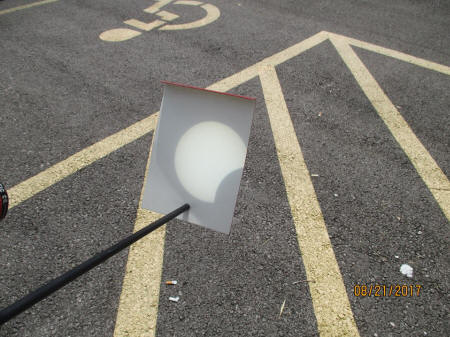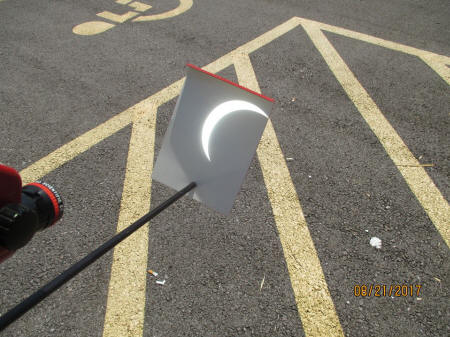| I started reading about this eclipse in 2015
in Astronomy Magazine. I tried to talk my wife into a taking a 2
week eclipse journey across the West that started in Arizona, but
she doesn't like to fly. I procrastinated until all motels along the
path were filled, so I called Bob Oskroba, a Duffer Hockey friend,
who works at a hotel in St. Louis, to see if he could get me into a
broom closet there. He immediately invited me to stay at his
home in O'Fallon Missouri that was located on the Eclipse path edge.
(They got 7 seconds of Totality) My wife agreed to go since Bob's
wife Cindy was a bowling partner a few years ago. We got there
2 days before the Eclipse, so that I could find a place closer to
Eclipse path center. I found that Eureka was 35 miles away and
it would have more than 2 minutes of totality, so we went there with
lawn chairs and umbrellas expecting to sit in the 95 degree heat for
several hours. When I got to Eureka, my phone had no signal and I
wanted to get to the Smithsonian Eclipse App that had an interactive
map that gave start and end times for every location. My bad luck
led me to a Verizon store where I was able to get my phone running .
Cindy, the manager was so friendly and eager to help. She directed
us to places to eat and offered her showroom as a place to escape
the heat. We went to eat and then came back to take advantage
of her offer. I set up my telescope in the parking lot
where I was able to project images of the eclipse on a small screen
where many people could view the sun without protective glasses.
This worked out so well and my anxiety started to ease. I was
worried about several things. Would I be stuck in a traffic
jam, would I find a place that was in the eclipse path with a
clear sky. The one thing that I was not worried about was my phone
and that failure solved my other fears! I met some wonderful people
who were so happy to find me. The Good Lord was looking out
for me. If the eclipse would have been on August 22nd, the sky
was covered with storm clouds. August 21st had scattered clouds that
did not interfere with our viewing. When I got back to Bob and
Cindy's house, I was high on life. I compared it to the feeling that
you get after winning a championship game. All of the things that I
feared could have gone wrong went unbelievably right! Sharing that
event with my wife and many new found friends was an experience that
I will remember for the rest of my life.
|
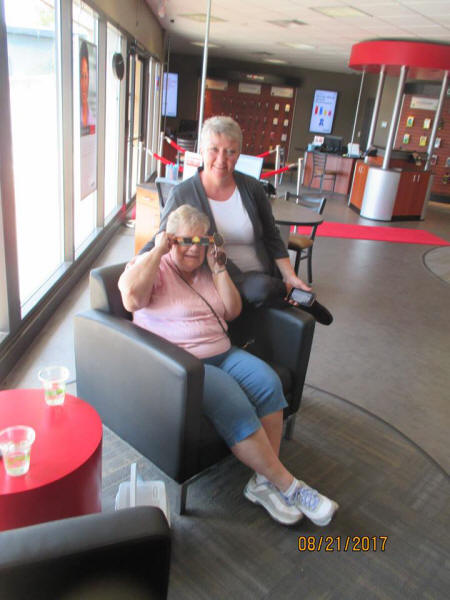 We viewed the eclipse in Eureka Missouri. Thanks to Cindy at the Verizon store, we were able to come in and cool off in an easy chair. |
 We had some passing clouds when the eclipse started. These pictures are projections of the Sun on a screen that are safe to look at without eye protection. The clouds passed and the Moon was clearly seen as it started to pass in front of the Sun. This picture was taken at 12:02. |
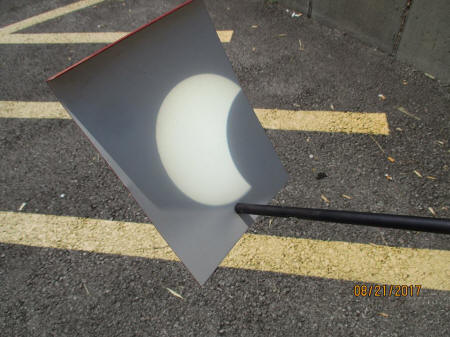 I went into the Verizon store to cool off between taking these pictures. This was taken at 12:10 |
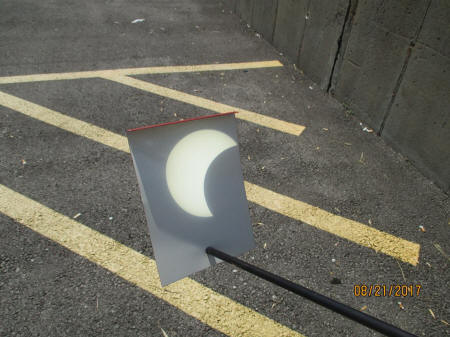 This picture was taken at 12:15 after cooling off inside for a few minutes. |
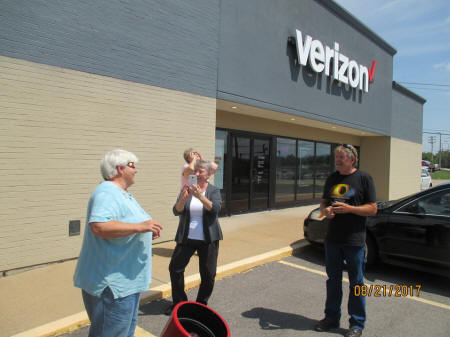 People started to gather as the sky started to dim and the temperature dropped slowly. |
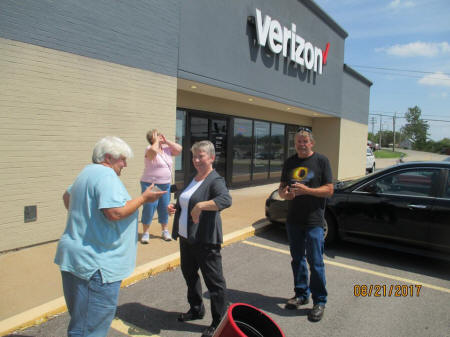 That is my wife looking at the sun with protective glasses. She is smarter than the president of the United States. |
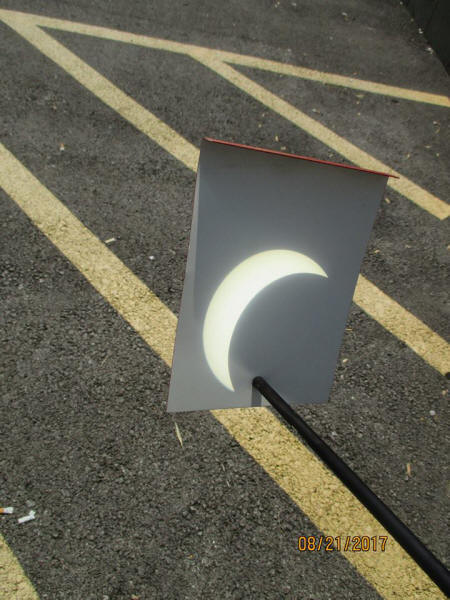 |
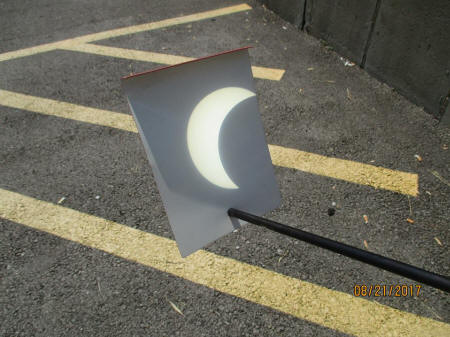 |
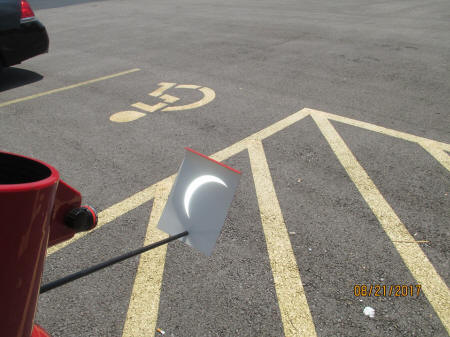 |
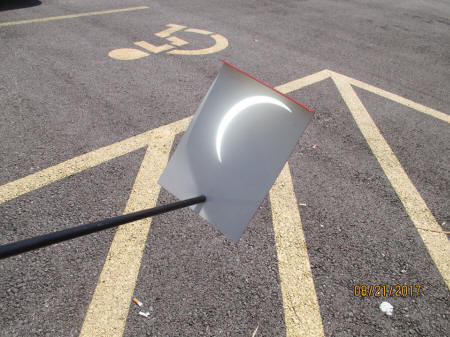 |
 We were close to totality when I took this picture. I did not take any pictures of totality because my camera would not focus properly. This was taken at 1:02 |
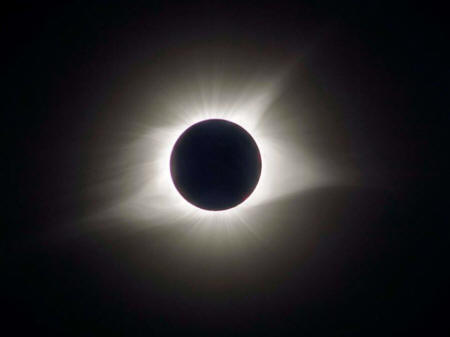 This is what we saw for over 2 minutes when the Moon was blocking the Sun from our vision. We were able to look at the Total eclipse without eye protection. |
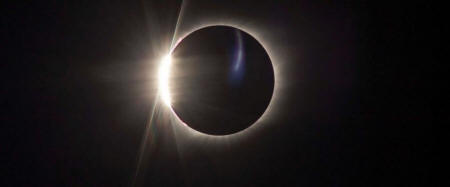 (Above) This is what we saw as totality ended. It looked like a diamond ring in the sky. Thanks to ABC for these photos. (Right) This photo from Livescience.com shows 36 images of the eclipse.
|
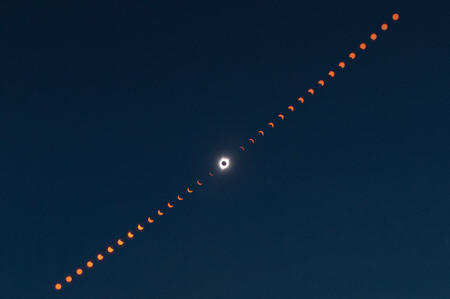 |
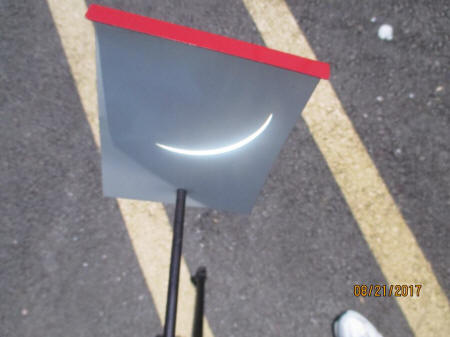 This is the first picture that I took after totality. The darkness started to lift and the temperature started to rise. |
 We enjoyed totality for over 2 minutes and we were able to see Venus off to the right of the Eclipse. When totality ended, there was a flash that gave the appearance of a diamond ring. |
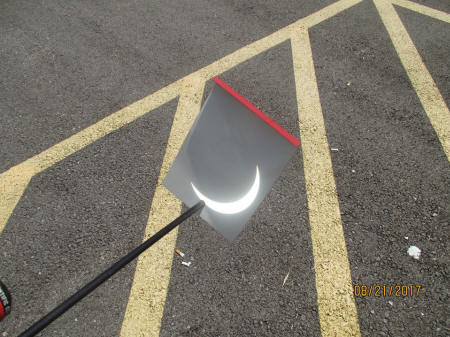 We were also able to see Jupiter off to the left of the Total Eclipse. It was an a wonderful experience. |
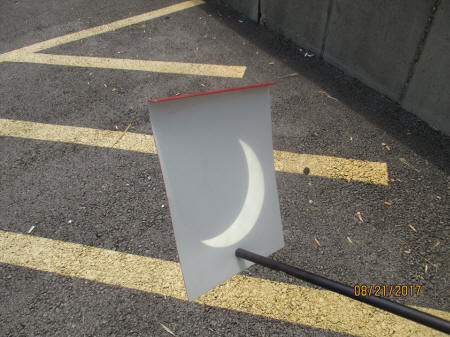 As the Moon moved to the left and the sun returned, the planets vanished. |
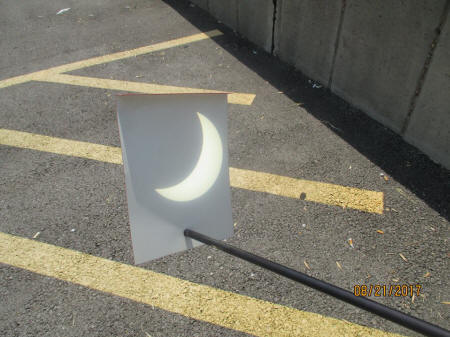 |
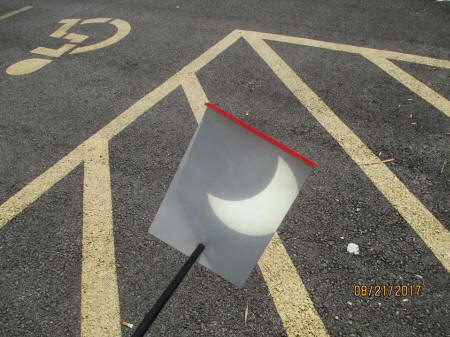 |
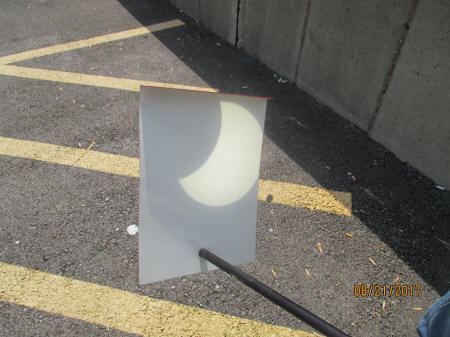 |
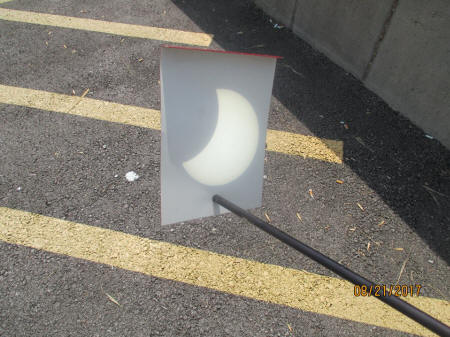 |
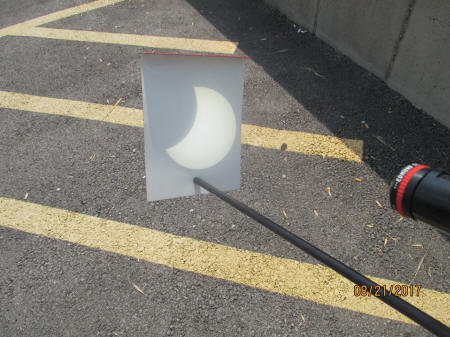 |
 |
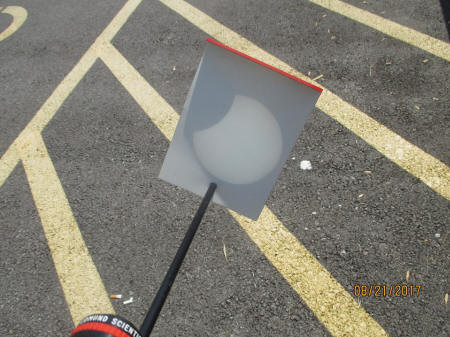 |
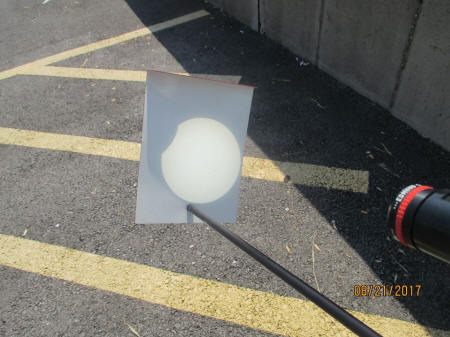 |
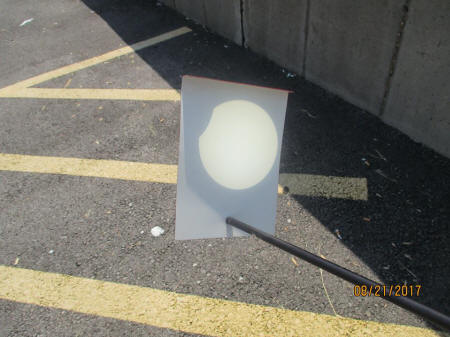 |
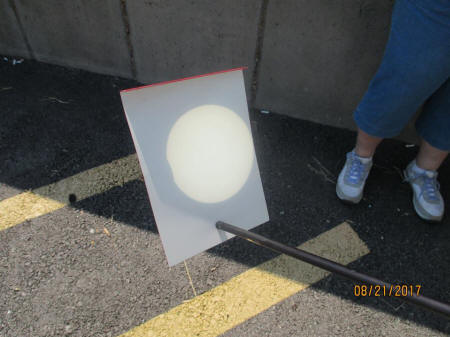 |
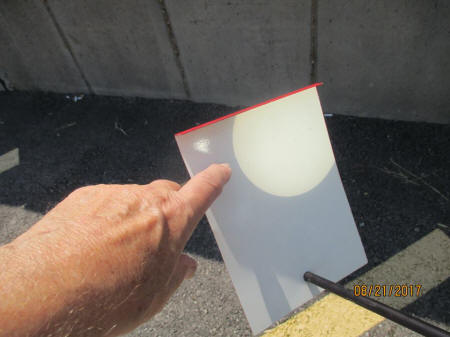 It is over! I am pointing to the last glimpse of the moon.
|
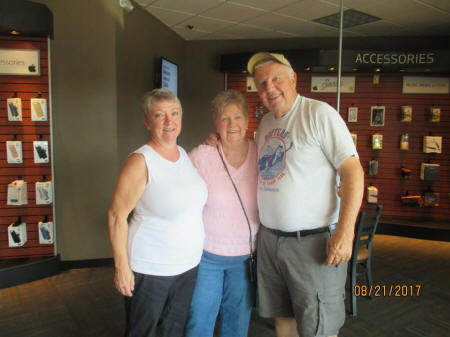 My wife and I thanked Verizon's Cindy for giving a place to cool off. The temperature was in the low 90s except when the Sun was blocked out by the Moon. |
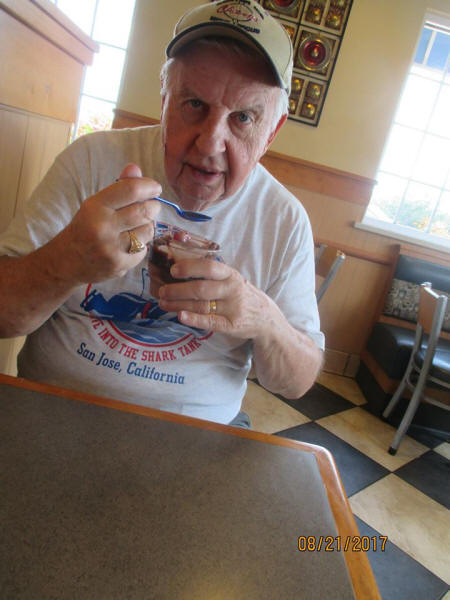 We celebrated with some ice cream after the eclipse. |
 We went back to our gracious hosts' house and thanked Bob and Cindy Menke Oskroba for their hospitality. I celebrated the same way that I celebrate after winning a big game. I had the same feeling of accomplishment. |
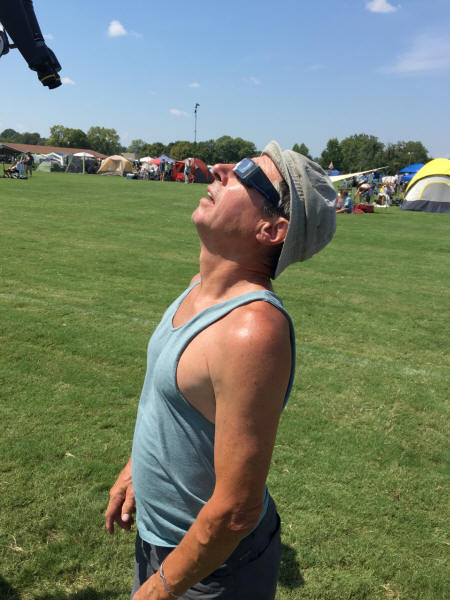 Tom O'Connor viewed the eclipse in Hopkinsville Kentucky.
|
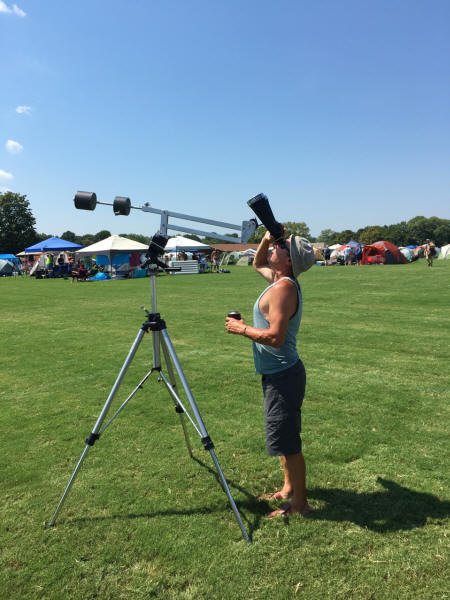 Tom is a Duffer Hockey friend. He shared with a 1000 people.
|
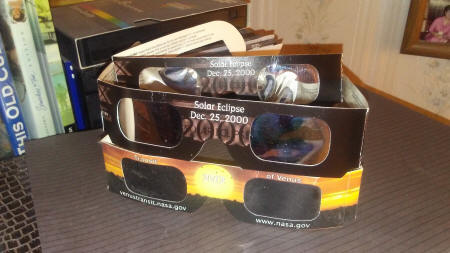 |
I had 2 of my eclipse glasses from the Christmas Eclipse of 2000. I used these glasses with a group of 4th graders when we viewed the transit of Mercury across the sun in 2006. I also had a pair from the 2012 Transit of Venus. You can view these events on my site at: Mercury Transit of 2006 |


